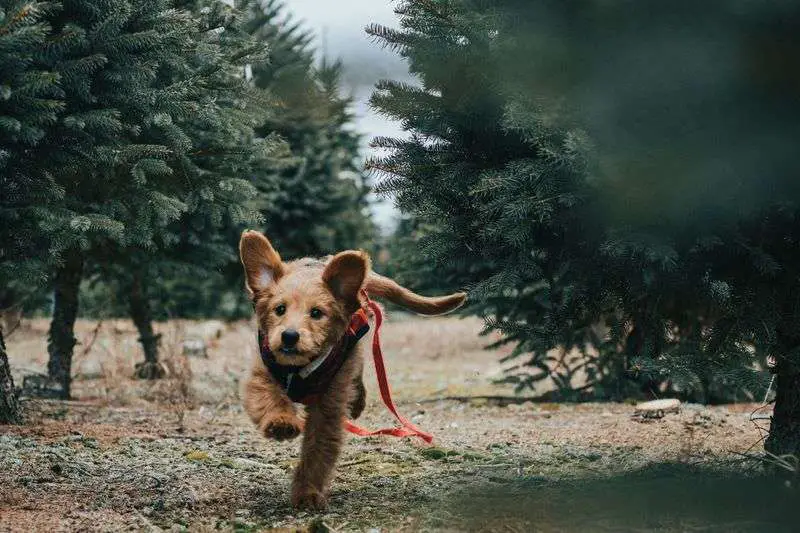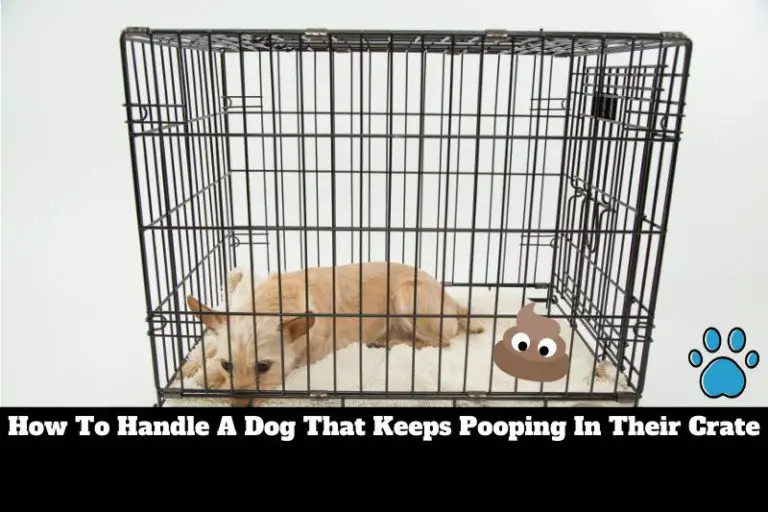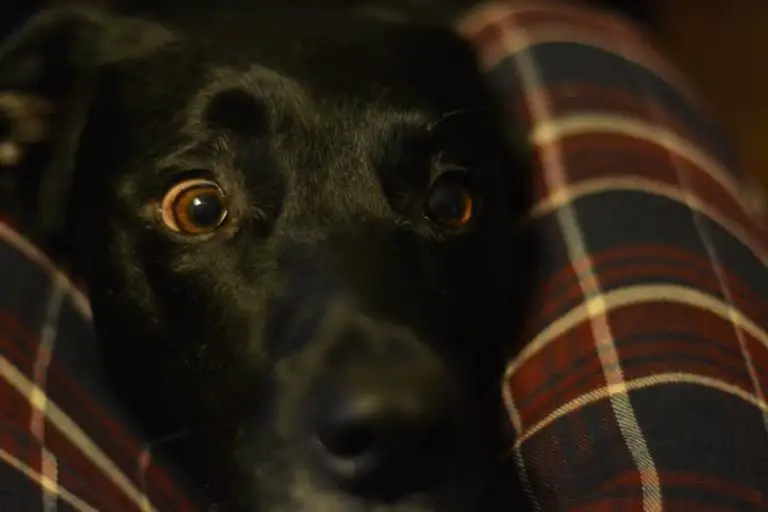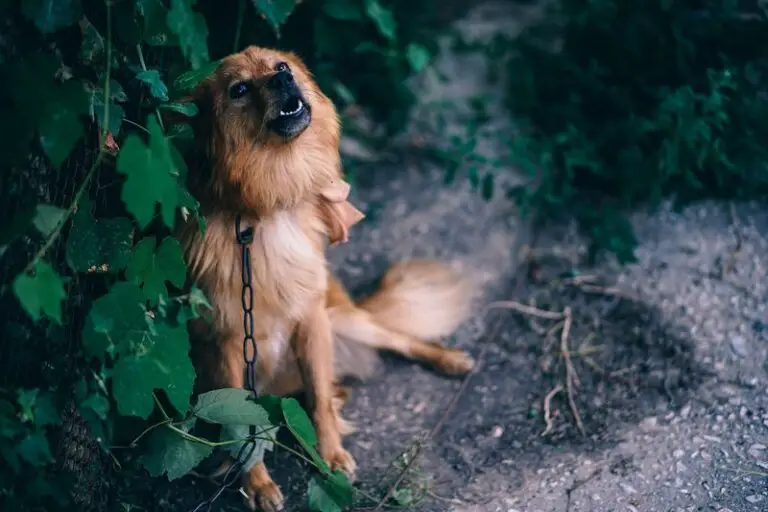Stressed puppy symptoms | What you need to look out for!
Stress is a certainty in life. It’s how your body reacts to difficult situations, whether real or imagined. Stressful situations induce a chemical reaction known as the flight-or-fight response. Common reactions to anxiety include an increase in your heart rate, faster breathing, tightening of the muscles, and rises in blood pressure.
The body is getting ready to protect itself from the danger that you’re facing. We all experience anxiety and no two people’s response to tension is the same. Similarly, stressed puppy symptoms sometimes resemble that of humans.
In small amounts, stress is helpful as it can protect you from harm in a particular situation. For example, if a dog jumps out into the street, your instinct to slam on the brakes to avoid a collision is a healthy stress response.
Recognizing Types of Stressed Puppy Symptoms
Stressed symptoms can be emotional, physical, cognitive, and behavioral. It is important to recognize stressed puppy symptoms when they present themselves.
Over a long period of time, chronic stress can lead to serious health issues, including mental health problems, cardiovascular issues, obesity, sexual dysfunction, skin and hair issues, and even gastrointestinal conditions.
It’s important to recognize signs of tension and trauma in your dog early so that you can help your puppy get back to a healthier, happier state.
Pacing and Shaking to Communicate Stress
Similar to humans, dogs may pace when aggravated or disturbed. They may also shake when they are going through stress.

Puppy shaking can also be linked to some other much more serious health conditions.
You may have observed this during a visit to the veterinarian. It’s interesting to point out here that we humans also find our stress levels raised when visiting the doctor.
Depending on the context, both pacing and shaking can be normal behaviors, like right before mealtime.
Pay attention to what’s going on as this may help you identify these behaviors as stressed puppy symptoms and narrow down possible triggers.
Interpreting Growling and Aggressive Behavior
Growling is one of the more obvious stressed puppy symptoms.
Dogs growl when they are uncomfortable which may be the result of feeling threatened or experiencing pain. Many canines also growl when they feel their space is being violated. (Territorial Behavior)
Although a growling pet induces a stress response in humans, try to figure out what is the source of the growling.
You don’t want to discourage your dog from growling or baring teeth as this often can be a warning that they’re ready to bite.
Getting Your Attention with Verbalizations
Whining or barking is another common way of your pup indicating their discomfort or stress.
Often your pet can’t always control its instinct to whine or bark, especially when under duress. As with kids, your pup may whine or bark as a means of getting your attention.
Whining is often accompanied by other behaviors. This stressed puppy symptom is analogous to the crying of infants.
Your doggy might be trying to tell you that they’re hungry or eager for a walk around the neighborhood.
Conveying Stress with a Yawn
Yawning is another one of several stressed puppy symptoms.

When taken in conjunction with other tense signs of body language, it can be interpreted as a sign of nervousness and discomfort with the present situation.
Yawning may also be an indicator that your puppy is confused and doesn’t know what to do. This particular sign may be observed commonly when training your puppy.
Pay special attention to yawns during training sessions.
Making Note of Body Language
Body language is a heavily discussed subject when it comes to dogs. Some common body language stress indicators may include the following:
- Whale eye. This is when a dog reveals the sclera or whites of its eyes.
- Tucked ears
- Tucked tail
- Raised hackles
- Lip licking
- Avoiding eye contact
- Panting
Your puppy is sensitive to changes in your voice and body language which may induce a stress response.
If they think something is wrong, some of these behaviors may manifest as stressed puppy symptoms. It is important to note that not every instance of these behaviors is due to worry or tensions.
For example, your dog will pant if it’s thirsty on a hot summer day. As with most other symptoms, context matters.
Stiffening Up
Another stressed puppy symptom is freezing. If your puppy tenses up and freezes, this may be a sign that they are seeing something that is truly traumatic and worrying.
This behavior is commonly recognized as your dog shutting down as a response to elevated levels of unease.
Be alert when you see your puppy acting this way because the escalation of the tension may result in a bite.
Making an Escape

Puppies can sometimes respond to stress by escaping.
They may literally attempt to hide or escape by moving behind you or another object such as a tree to create distance between themselves and their stressors.
Your puppy may escape figuratively by directing its attention to something else. This may manifest as them sniffing the ground, turning away, or licking their genitals.
This is an example of flight response to anxiety.
Losing Control of Bodily Functions
Response to extreme stress that is shared by both humans and dogs concerns bodily functions.
You’ve probably heard of people urinating on themselves in extremely stressful situations.
Dogs sometimes respond to situations similarly.
Other bodily function changes may include an unwillingness to eat as well as the loss of bowel function. Pay attention to lack of appetite and other changes as stressed puppy symptoms that can lead to a deterioration in health.
Losing Hair
A sign of trauma in humans is a sign of hair loss. The shedding of hair is an early sign of nervousness displayed by puppies.
As with other symptoms, shedding may not always be a sign of stress, as a chronic situation may call for intervention by a veterinarian.
Keep in mind that some breeds are hairier than others and what looks like excessive shedding may be perfectly normal.
Differentiating Stress from Other Behavioral Causes
When it comes to recognizing real stressed puppy symptoms, you need to have an idea of how your fur baby normally behaves.
Knowing the difference between strained and non-strained behavior helps you recognize a potentially uncomfortable or dangerous situation involving your puppy and other people or dogs.
It would be great if your puppy could tell you in clear English when they’re uncomfortable, but the reality is that they can respond similarly in different contexts.
You’ll need to make sure to observe their behavior to properly interpret the symptoms that you’re witnessing. It’s hard to know what your pup is actually feeling, but objective observation can help you make an assessment and respond accordingly.
How Can I Help My Puppy With Stress
As you may already know, stress can come from many different things. A very common cause for stress in puppies is tiredness, fatigue, restlessness.
Overall, your puppy will just feel like a hot mess.
A quick fix solution that I always recommend to new puppy owners to help puppies with stress is Zesty Paws Calming Bites (link to Amazon). The treats add a bit of pep to your pup’s step.
The secret ingredient is suntheanine, which supports stress-free relaxation that stimulates a puppy’s calming brain waves and give you your happy puppy back again.
You’ll thank me later!
For a more subtle approach to tackling your stressed puppy’s symptoms try these three tips.
Removing the Stressor
If possible, separate your puppy from the stressor. Sometimes human children need a time out to calm down and collect themselves.
Your dog will also benefit from having a quiet and/or safe place to recalibrate.
You may be tempted to over-soothe your puppy which can have the unintended consequence of making them chronically nervous and lacking confidence.
Consider rewarding your puppy with training treats after successfully responding to a command, which can help usher in a sense of normalcy that brings your furry fella back to a balanced state.
Providing a Safe Space

Giving your dog a safe, neutral zone to regroup is part of an effective plan for addressing stressed puppy symptoms.
Keep in mind that what you consider to be a relaxed environment may not necessarily be the same for your puppy, especially in a bustling household.
Your puppy will benefit from having a place of their own to retreat to when stressed.
Such a place may include a blanket, a bed or a crate that is out of the way. This area may be one of your canine’s own choosing or a space that you designate.
The key here is that this is a place for your pet to be left alone, so they shouldn’t be bothered by other family members, especially children, when in their safe space.
Getting Expert Help
If it seems like your dog is always experiencing stressed puppy symptoms, consult an expert such as a veterinarian or a qualified dog trainer near you.
A vet can assess whether these symptoms arise from a medical situation.
A trainer may help you identify inadvertent triggers in your environment, some of which you may contribute to such as unclear commands, discomfiting eye contact or misguided punishment.
Exercise is a great way for humans to relieve stress and this is also true for your dog. Carve time out of your busy schedule for regular physical activity with your puppy to help break up the tensions.
When it comes to stress, no creature is immune.
Each member of your household is vulnerable to the effects of tension on the body, including your littlest four-legged friend.
You know some of the harm that unmitigated stress can cause to the body, so it is important to recognize stressed puppy symptoms and find ways to bring your precious fur baby back to a state of calm.
Be familiar with how your doggy behaves in normal situations, so you can recognize when they’re agitated and prevent escalation into dangerous territory.
I hope that that this article has been helpful and informative and allows you to take the necessary steps required to brighten your puppy’s day.









